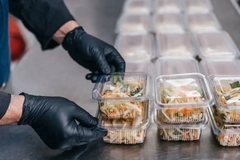Wasted opportunity? UK losing £13M in taxes and gate fees due to mismanaged household trash, finds Recoup

17 May 2023 --- Recoup has revealed over 120,000 metric tons of rigid and hard plastics from household waste recycling centers (HWRC) are going unrecycled in the UK.
“At present, this material being disposed of as residual waste will incur costs relating to its disposal – either through landfill tax or gate fees for energy recovery. This would amount to around £13 million (US$16 million) for 120,000 metric tons,” Tom McBeth, policy and infrastructure projects manager at Recoup, tells PackagingInsights.
“Furthermore, there is potential value in the material itself, as well as any Packaging Recovery Notes that could be claimed (for the packaging fraction only) that would further offset the cost of processing the material.”
Recoup’s “2023 Plastics Management and Recycling at Household Waste Recycling Centres in the UK” report suggests interventions to help enable plastic disposed at HWRCs to fit into circular economy models.
It recommends creating a robust dataset relating to material captured at HWRCs, better understanding the journey of this material from collection to its destination and identifying the requirements for greater investment in UK infrastructure to sort and reprocess traditionally hard-to-recycle plastics.
Additionally, it endorses the development of reuse infrastructure to remove items disposed of as waste in instances where they can be recovered.
“Items disposed of at HWRCs may be repairable or reusable, and efforts have been seen to trial stores at HWRCs that salvage, repair where necessary, and sell items that would otherwise be sent for disposal,” details McBeth.
“However, there are no commercial drivers to scale this up nationally.”
![]() Over 120,000 metric tons of plastics from household waste recycling centers are unrecycled in the UK.Recycling infrastructure development
Over 120,000 metric tons of plastics from household waste recycling centers are unrecycled in the UK.Recycling infrastructure development
Recoup outlines a gap in the UK’s recycling infrastructure capacity for packaging items and types, including pots, tubs and trays, films and flexibles, and food-contact packaging.
“For material at HWRCs, existing infrastructure will be unable to process some of it, and more innovative technologies and solutions may be needed, such as types of chemical recycling, that could help capture some of the material,” shares McBeth.
“While the UK generally has the sorting capacity to handle packaging waste, these types of material create a different challenge in separating mixed materials that may be within an item, or their size or weight,” he explains.
“The benefit of an HWRC is that the environment allows itself to source-separate the materials through the citizen or staff on site. This is something that could be developed sooner.”
McBeth continues that the Recoup report helps to show the need for investment in infrastructure, as well as greater efforts to engage and educate citizens regarding disposing of and recycling their waste.
“The challenges with the material at HWRCs are not limited to citizens, and we should not risk seeing a loss in the material being correctly disposed of if the alternative is to see it littered, fly-tipped, or seen in incorrect curbside waste streams,” he emphasizes.
“Instead, investment is needed to help manage the materials when collected, source separating them, and having the reprocessing infrastructure available to manage this material and turn it into a valuable resource.”
As part of this, McBeth argues that export markets should not be ruled out if developed nations can be proven to handle this material. “However, domestic infrastructure should be a key focus for the UK and other countries that see similar challenges.” McBeth at Recoup argues that export markets should not be ruled out for waste material.
McBeth at Recoup argues that export markets should not be ruled out for waste material.
Recycling failure
According to McBeth, the positive news to take away from Recoup’s annual survey and report on HWRC is that material is captured – albeit as residual waste and likely sent for landfill, energy recovery or export – and less likely to end up in the environment.
“While it’s positive that this volume of material is being captured at HWRCs, and that citizens are correctly doing what is asked of them to dispose of these materials, it is the challenge of separating and processing the plastics within this stream,” says McBeth.
“By design, materials disposed of at HWRCs cannot widely be disposed of at curbside – due to their size, composition or contamination levels. They are often bulky, may include other materials (e.g., a large plastic children’s toy may contain metal parts or be electronic or battery operated) and used in environments where they are possibly subject to wider contamination (e.g., garden-based products and furniture or car trim).”
Recoup’s 2022 “UK Plastic Packaging Sorting & Reprocessing Infrastructure” report found a need for investment in reprocessing infrastructure to produce the necessary recyclate for current volumes placed on the UK market to contain 30% recycled content, the threshold for both the Plastic Packaging Tax and WRAP’s Plastic Pact.
The study also found a “big discrepancy” between collecting and recycling high-value plastics, such as food-grade PET and HDPE, and low-value and hard-to-recycle household plastics, such as films and flexibles.
By Radhika Sikaria











